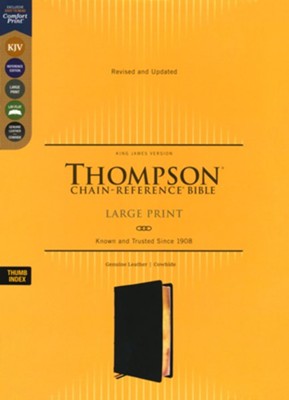A Comprehensive Guide to the Differences Between The King James Version Bible, The NIV Bible, and The NKJV Bibles
A Comprehensive Guide to the Differences Between The King James Version Bible, The NIV Bible, and The NKJV Bibles
Introduction:
The Bible is a sacred text that has been translated into various languages over the centuries. The most popular versions of the Bible in English include the King James Version (KJV), the New King James Version (NKJV), and the New International Version (NIV). In this article, we will discuss the differences between these three translations of the Bible.
Differences between the KJV, NKJV, and NIV Bibles
I. The King James Version (KJV)
The King James Version, also known as the Authorized Version, was published in 1611 by King James I of England. The KJV was translated from the Textus Receptus Greek and the Bishops' Bible in English, to create a uniform English translation of the Bible for the Church of England.
A. Language
One of the most notable features of the KJV is its language. The KJV uses Elizabethan English, which can be difficult for modern readers to understand. The language of the KJV is considered elegant and poetic, but it is not always easily understood by those who are not familiar with the language.
B. Translation Philosophy
The KJV was translated to create a uniform English translation of the Bible for the Church of England. The translators placed a strong emphasis on maintaining the wording and style of the original text, rather than making the translation more understandable to the reader. This has resulted in a translation that is often considered to be more faithful to the original text, but also more difficult for modern readers to understand.
II. The New King James Version (NKJV)
The New King James Version was published in 1982 and is a revision of the KJV. The NKJV was intended to update the language of the KJV, making it more understandable to modern readers while still maintaining the style and wording of the original text.
A. Language
The language of the NKJV is significantly easier to understand than the KJV, as the translators made an effort to update the language while still retaining the poetic and elegant style of the original text. The translators of the NKJV attempted to balance the demands of accuracy and clarity, making the NKJV a good choice for those who want a translation that is both accurate and easy to read.
B. Translation Philosophy
Like the KJV, the NKJV places a strong emphasis on maintaining the wording and style of the original text. The translators of the NKJV, however, made an effort to update the language to make the translation more understandable to modern readers. This has resulted in a translation that is more accessible to modern readers while still maintaining the accuracy and style of the original text.
III. The New International Version (NIV)
The New International Version was first published in 1978 and is a dynamic equivalence translation of the Bible. The NIV was intended to be readable, yet accurate, translation of the Bible for modern readers.
A. Language
The NIV is written in contemporary English, making it one of the easiest translations of the Bible for modern readers to understand. The language of the NIV is clear and concise, making it an excellent choice for those who are looking for a readable and understandable translation of the Bible.
B. Translation Philosophy
The NIV is a dynamic equivalence translation, which means that the translators placed a strong emphasis on making the translation understandable to modern readers. This has resulted in a translation that is more accessible and readable than other translations but may be less faithful to the wording and style of the original text.
Pros and Cons of the KJV, NKJV, and NIV
I. King James Version (KJV)
Pros:
1. Faithful to the original text: The KJV places a strong emphasis on maintaining the wording and style of the original text, making it one of the most accurate translations available.
2. Elegant and poetic language: The language of the KJV is considered to be elegant and poetic, making it an enjoyable read for those who appreciate this style.
Cons:
1. Difficulty in understanding: The language of the KJV, written in Elizabethan English, can be difficult for modern readers to understand, making it less accessible for many.
2. Lack of contemporary language: The use of older English in the KJV can make it less relevant to modern readers, as it may not reflect the contemporary language and cultural norms.
II. New King James Version (NKJV)
Pros:
1. Balances accuracy and readability: The NKJV is a revision of the KJV that updates the language to make the translation more accessible to modern readers, while still maintaining the style and wording of the original text.
2. Improved language: The language of the NKJV is easier to understand than the KJV, as the translators made an effort to update the language while still retaining the poetic and elegant style of the original text.
Cons:
1. May not be as faithful to the original text: Although the NKJV tries to maintain the wording and style of the original text, it may not be as faithful to the original as the KJV.
2. Language may not appeal to everyone: The language of the NKJV may not appeal to everyone, as some people may prefer the more traditional language of the KJV.
III. New International Version (NIV)
Pros:
1. Contemporary language: The NIV is written in contemporary English, making it one of the easiest translations of the Bible for modern readers to understand.
2. Readability: The language of the NIV is clear and concise, making it an excellent choice for those who are looking for a readable and understandable translation of the Bible.
Cons:
1. Less faithful to the original text: The NIV is a dynamic equivalence translation, which means that the translators placed a strong emphasis on making the translation understandable to modern readers. This may result in a translation that is less faithful to the wording and style of the original text.
2. May not appeal to those who prefer a more traditional style: The contemporary language of the NIV may not appeal to those who prefer a more traditional and poetic style of language, such as that found in the KJV.
Conclusion
In conclusion, the King James Version, the New King James Version, and the New International Version are three of the most popular translations of the Bible in English. Each of these translations has its own unique features, strengths, and weaknesses. The KJV is an elegant and poetic translation that is considered to be more faithful to the original text but may be difficult for modern readers to understand. The NKJV is a revision of the KJV that updates the language to make the translation more accessible to modern readers, while still maintaining the style and wording of the original text. The NIV is a dynamic equivalence translation that is written in contemporary English and is one of the easiest translations for modern readers to understand.
Ultimately, the choice between these translations will depend on the individual's preferences and needs. Some may prefer a more faithful and accurate translation, while others may prefer a translation that is easier to understand. For those who want a balanced approach, the NKJV may be the best choice, as it offers both accuracy and readability. Regardless of which translation is chosen, it is important to remember that the Bible is a sacred text and should be approached with respect and reverence.







.jpg)
.jpg)

Comments
Post a Comment